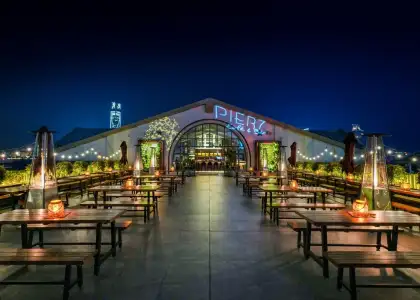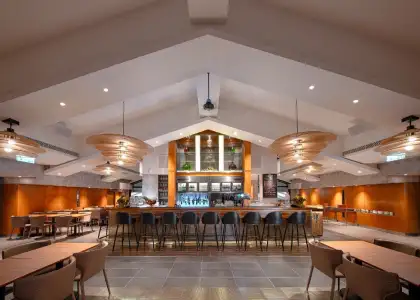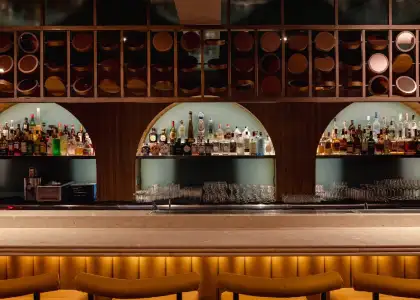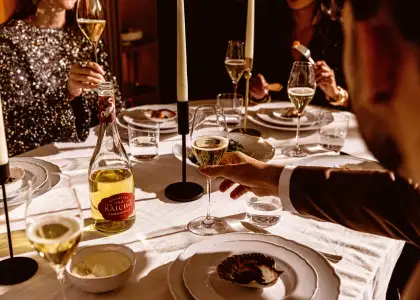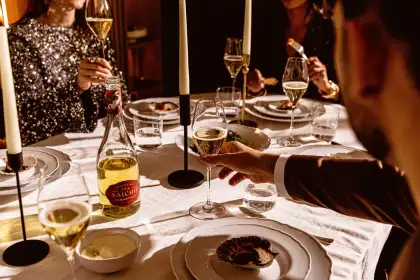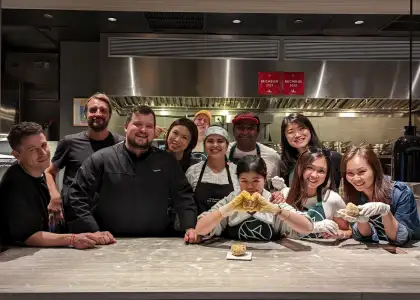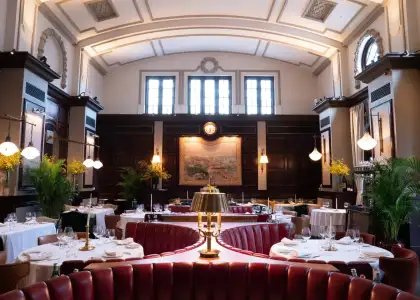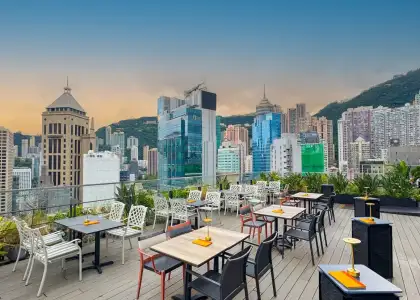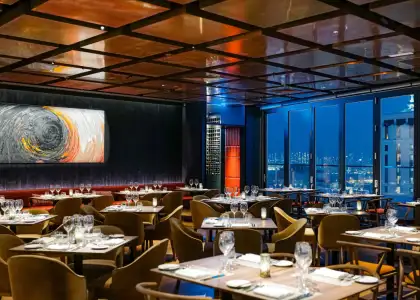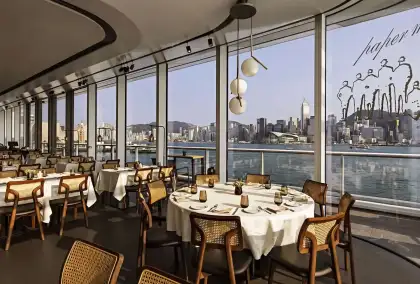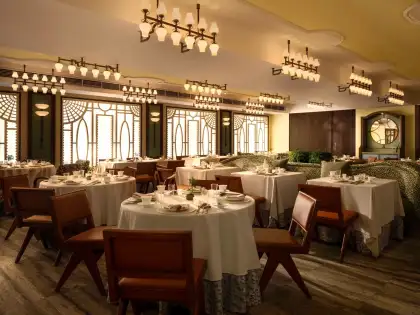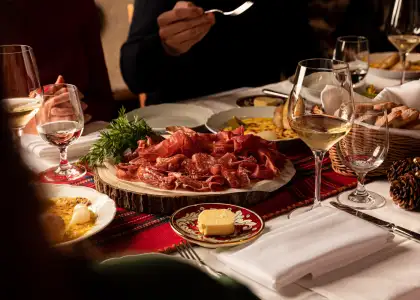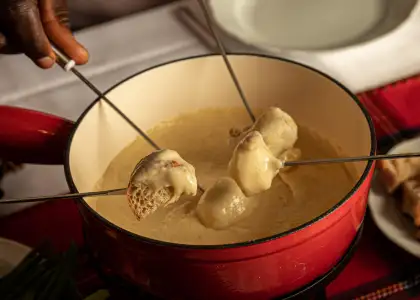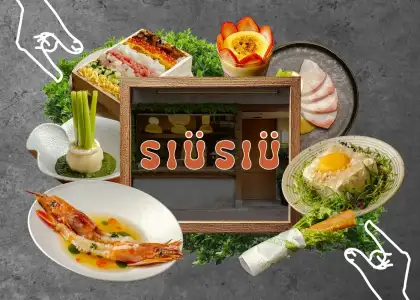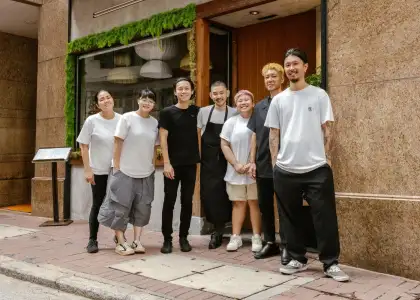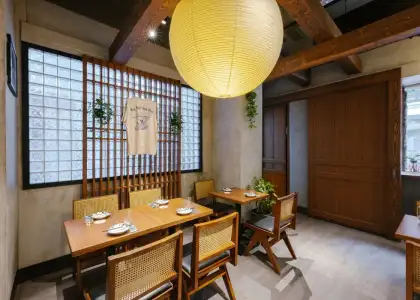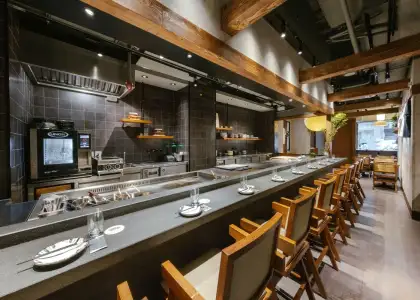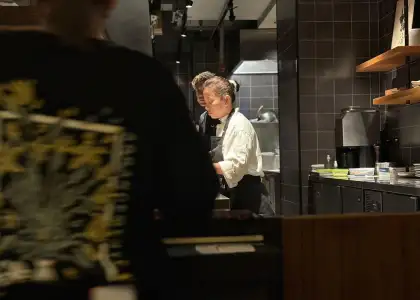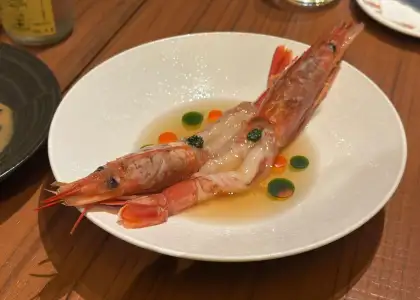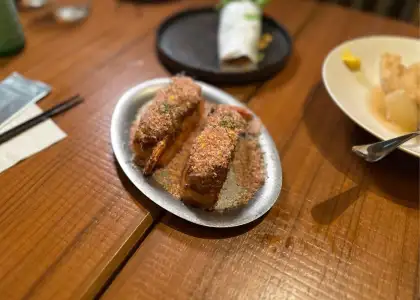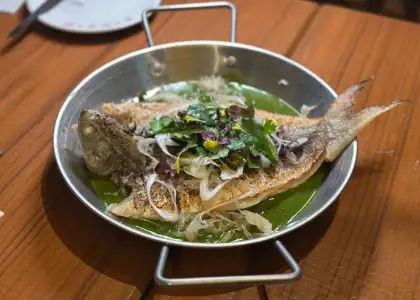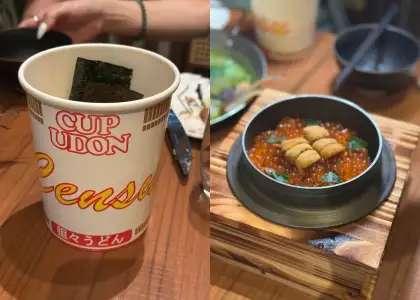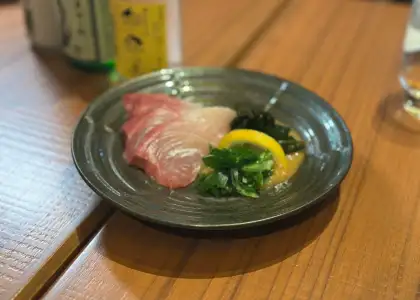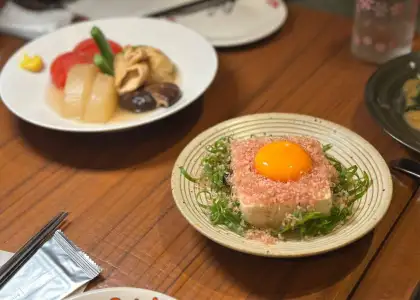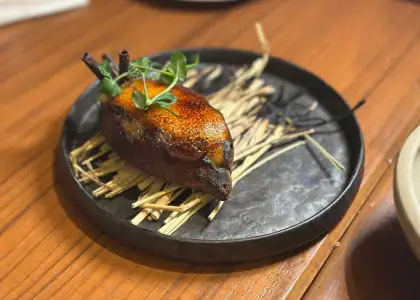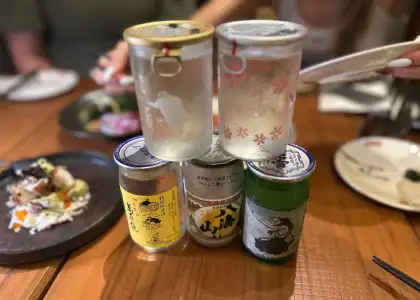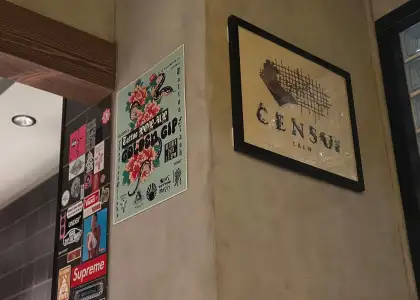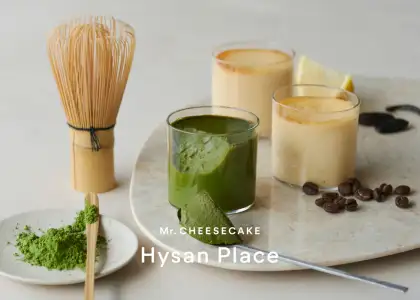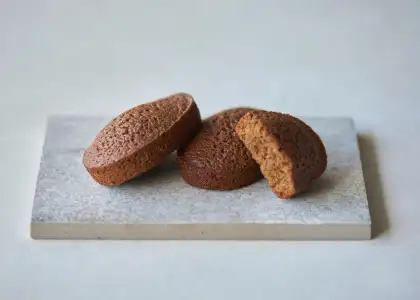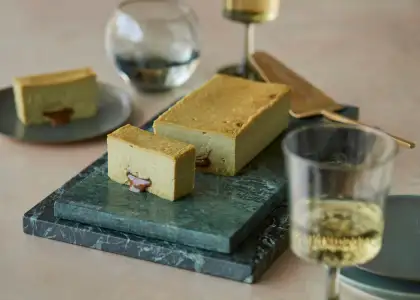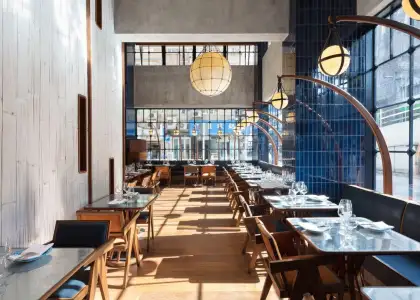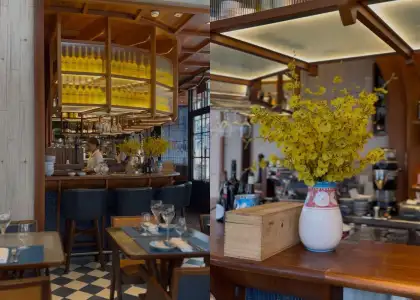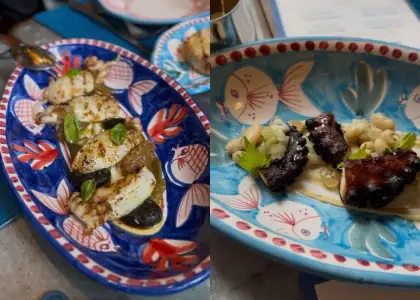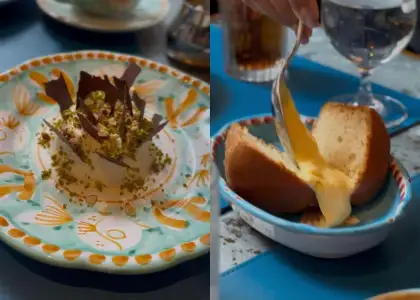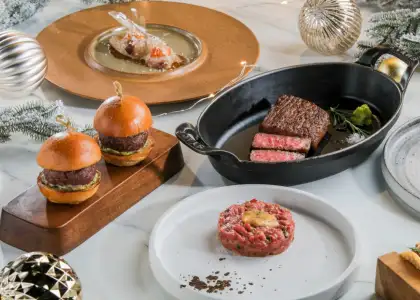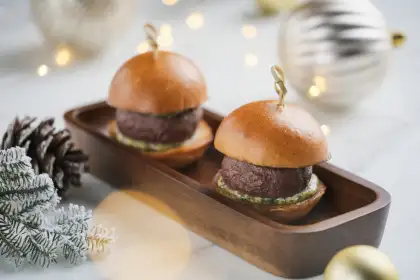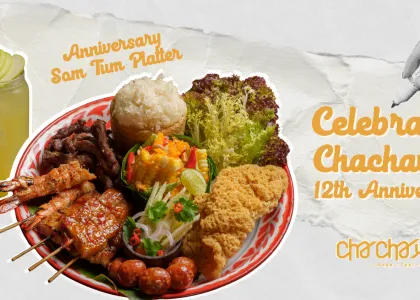Yes Chef! Vicky Lau on Soy and Sustainable Dining at MORA and TATE
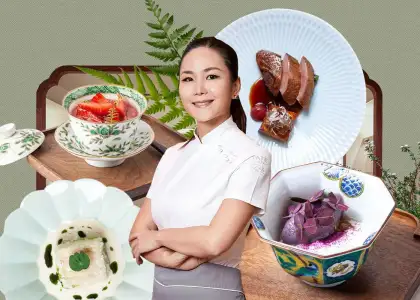
Asia is one food-crazy continent! We take great care to pick restaurants based on culinary vibes, rankings in international gourmand guides, mentions in magazines, Instagramability, and added allure. Yes, Chef! features the region’s chefs' stories of love and labor in kitchens, which has made some of our restaurants the next big thing in Asia.
Award-winning chef Vicky Lau is a local culinary powerhouse, known for exquisite dishes that combine precision with creative flair, which are inspired by the city's dynamic East meets West culture.
Chef Vicky is flying the flag for fine dining in Hong Kong, bearing a fistful of Michelin stars. She is the Head Chef and owner of two MICHELIN-starred TATE Dining Room, as well as one MICHELIN-starred + MICHELIN Green-starredMORA. Her career has skyrocketed over the past decade, earning Asia’s Best Chef 2015 title by World’s 50 Best Restaurants, and securing the 53rd position in the Best Chef Awards in 2023.
In January 2022, Chef Vicky launched MORA, a modern French Chinese restaurant that pays bold tribute to the versatility of soy in a fine-dining layout.
She is also the proud owner of lifestyle and pastry boutique Date by TATE and Ān Soy, the latest soy addition to MORA redefining plant-based cuisine.
Chef Vicky has cemented her reputation in Hong Kong as a trailblazer in both taste and ethical, sustainable dining. Her unique “Characters of Soy” menu at MORA is driven by an unwavering commitment to sustainability. The restaurant focuses on using fresh ingredients sourced from local farmers which guarantees both fresh produce and a lower carbon footprint.
The Beat Asia found out more from Chef Vicky about her culinary inspirations and her visions for the future of sustainable dining.
Can you share more about MORA’s “Characters of Soy” menu?
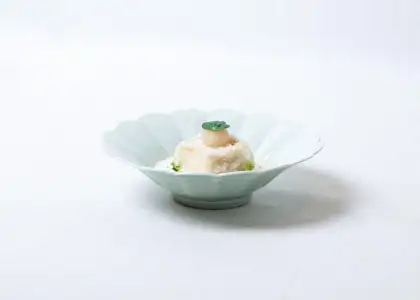
At MORA, we feature dishes that honor the history of soy in cuisine while emphasizing sustainability and quality.
The inspiration for the menu comes from our commitment to building strong relationships with local farmers. By sourcing ingredients locally, we empower our community and guarantee access to the freshest and most diverse produce available. This approach supports the local economy and significantly reduces the carbon footprint.
Through each dish in the "Characters of Soy" menu, we explore the versatility of soy, showcasing it as a delicious, nutritious, and elevated alternative to less sustainable ingredients and cooking methods.
Is there a particular dish on “Characters of Soy” that you feel especially connected to or proud of?

I am particularly fond of the Chrysanthemum Tofu. This requires intricate knife skills to shape the tofu into a beautiful flower which opens up when the supreme broth is poured over. Given the delicacy of the tofu, careful handling is essential during preparation.
Can you tell us about the inspiration and evolution of the "Ode To" menu at TATE Dining Room?
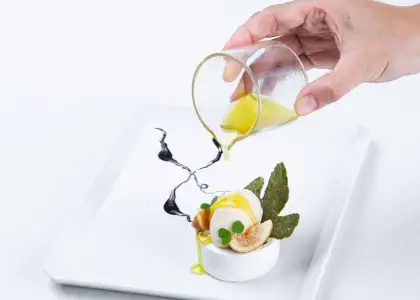
The "Ode To" menu at TATE Dining Room is a heartfelt tribute to exceptional ingredients, an evolving exploration that deeply resonates with me. Each installment of the menu focuses on a single ingredient, allowing us to delve into its many facets and celebrate its journey from farm to table. This approach not only challenges my team and me to push our creative boundaries but also invites diners to develop a deeper appreciation for the humble ingredients and the skilled artisans behind them.
What is it about soy that you find so compelling, and how does it reflect your East-meets-West culinary vision?

Soy is a pillar ingredient in Asian cuisines and cultures and serves as a driving force for heritage, tradition, and mindfulness. Despite its fragility in cuisine, soy can endure time and temperature while also providing a subtle and fleeting flavor. Its potential when paired with other ingredients is surprisingly abundant.
Soy is also considered one of the most sustainable plant-based sources of protein, making it an ideal ingredient for environmentally-conscious cuisine. It can grow quickly and without the need for excessive amounts of water or pesticides.
We make our soy goods daily using our own custom-built soy milk pressing machine at our kitchen facility in Chai Wan. Soy's environmental benefits make it an ingredient that we are proud to feature in our cuisine.
At both TATE and MORA, food is an art form. What are the creative values you follow to make each dish not only taste exquisite but also resonate on a visual and emotional level?

I studied graphic communications at New York University, where a professor introduced me to a manifesto by Ken Garland, which encouraged designers to reconnect with their roots and create work that positively impacts humanity, regardless of our backgrounds or future paths.
Returning to my roots in Hong Kong has been a transformative experience. Immersing myself in the rich culture and traditions of my hometown allows me to craft dishes that tell a story, and which draw from the unique heritage that shapes my identity as a chef. This connection enables me to produce food that resonates visually and emotionally, inviting diners to experience a piece of my journey.
Sustainability is a key focus in your work. How do you bring eco-friendly practices into TATE and MORA’s menus and daily operations?

I believe that sustainability should now be a priority in the design and operations of restaurants. Our sustainable approach starts from ingredient sourcing in the kitchen and extends to everything we touch inside the restaurant itself – including our zero-waste e-menus and using eco-friendly cleaning products.
For ingredients at TATE and MORA, we make smart choices from sustainable farmers, as locally as possible, and minimize kitchen waste through our menu design and portion sizes. More importantly, we teach guests to be aware of these sustainable choices – everyone has the responsibility to embrace sustainability as a way of life and business.
At MORA, we are committed to using sustainable ingredients.
Are you noticing any shifts in how Hong Kong diners approach fine dining, regarding sustainability and ingredient sourcing?
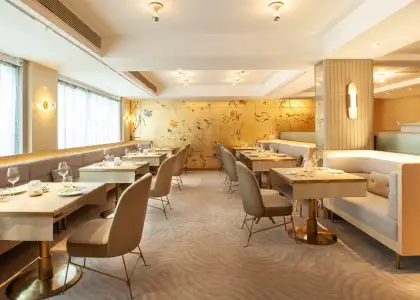
In recent years, there has been a noticeable shift among Hong Kong diners towards a more sustainable approach to fine dining, mirroring trends seen globally. This movement is particularly evident in the growing acceptance and integration of vegetarianism into everyday dining. What was once viewed as a trend has now become a fundamental aspect of many diners' lifestyles.
Hong Kong's culinary landscape is uniquely positioned to embrace this shift, given the rich history of vegetarian cuisine in Chinese culture, especially within Buddhist traditions.
This sustained interest in vegetarianism and sustainability signals changing consumer preferences and a broader commitment to environmentally conscious dining.
You are a judge for the San Pellegrino Young Chef Awards, and mentor for Ardy Ferguson, winner of the San Pellegrino Young Chef Award (Asia). What is one thing you hope to impart to him as he prepares for the world finals in Milan this year?
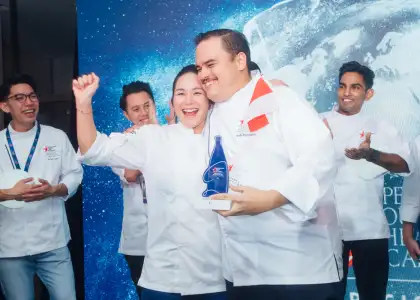
My approach to mentoring Ardy Ferguson focuses on honoring his Indonesian heritage, which is a vital part of his culinary identity. I believe that drawing inspiration from his roots will not only enrich his dishes but also allow him to share a unique narrative with the judges and audience.
One key lesson I hope to impart to Ardy is the importance of confidence in his culinary journey. I want him to embrace his passion fully and trust in his instincts as a chef. This confidence will help him navigate the challenges of the competition. I’m excited to see how he will make his mark in the world finals in Milan next year!
What do you see as the most important qualities for a young chef entering the fine dining world today? How do you help your mentees cultivate these qualities?
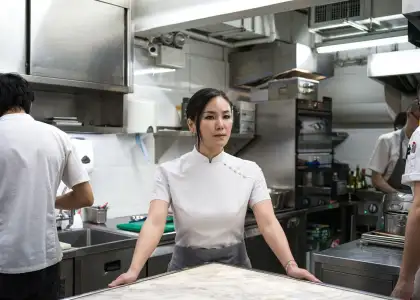
In today’s fine dining world, the most important qualities for a young chef are resilience, curiosity, and a strong work ethic. The industry is challenging for everyone, regardless of gender or age, and the pressure to achieve precision and consistency often leads to long hours and personal sacrifices.
To help my mentees cultivate these qualities, I emphasize the importance of a strong mindset and encourage them to stay connected to their passion and remember what motivates themeach day. There is so much value to curiosity — never stop asking questions, seeking knowledge, and exploring new experiences. Traveling and discovering diverse culinary influences can provide invaluable inspiration and help them grow as chefs.
With the continuous evolution at TATE and MORA, what exciting projects or ideas are you looking forward to pursuing in the future?
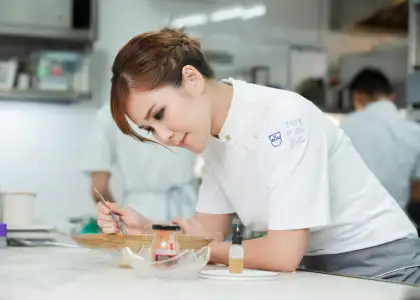
I plan to travel more to Mainland China to deepen my understanding of the terroir, and discover unique ingredients to keep our menus dynamic and innovative.
Currently, I am working on a new school program, The Snack Box Project, a project that was inspired by my daughter’s school. This program transforms snack boxes into vibrant treasure chests filled with foods that spark joy and educates families on making snack boxes more healthy, nutritious, and delicious.
We also want to inspire students to learn more about the local farmers' produce and what Hong Kong has to offer. We are just starting on this but have been overwhelmed by the support from our chef community in Hong Kong – check it out here.
This interview has been edited for length and clarity.
Reservations at MORA can be made on SevenRooms. For more information, visit their website, Facebook, and Instagram for their latest updates.
Reservations at TATE Dining Room can be made on SevenRooms. For more information, visit Tate on their website, Facebook, and Instagram for their latest updates.
Enjoyed this article? Check out our previous Yes, Chef! articles here.
Subscribe to The Beat's newsletter to receive compelling, curated content straight to your inbox! You can also create an account with us for free to start bookmarking articles for later reading.














